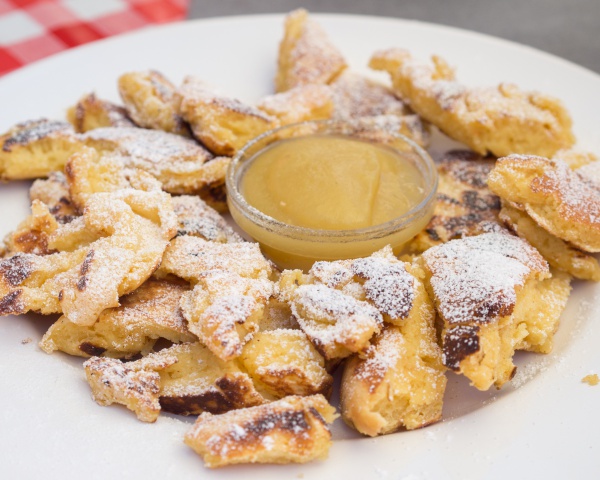Facts About Kaiserschmarrn
Kaiserschmarrn, also known as Kaiserschmarren, is a delightful dessert with a dash of royal history. Named after the Austrian Emperor Franz Joseph I, who was particularly fond of this fluffy, shredded pancake, Kaiserschmarrn is a beloved treat in Austria, Bavaria, and various regions of the former Austro-Hungarian Empire, including Hungary, Slovenia, and Croatia. In these areas, it is known by various names, such as "cesarski praženec" or "šmorn" in Slovenia, "császármorzsa" in Hungary, and "(Císařský) trhanec" or "kajzršmorn" in the Czech Republic.
The name "Kaiserschmarren" is a combination of "Kaiser" (emperor) and "Schmarren" (a term for a scrambled or shredded dish). Interestingly, "Schmarren" can also mean trifle, mishmash, mess, rubbish, or nonsense in Austrian and Bavarian dialects. This dessert is made from a sweet batter consisting of flour, eggs, sugar, salt, and milk, all baked in butter. It can be enhanced with ingredients like nuts, cherries, plums, apple jam, or caramelized raisins and almonds.
Typically, Kaiserschmarrn is served hot, dusted with powdered sugar, and paired with fruit sauces or compotes. It's versatile enough to be enjoyed as a dessert or even as a hearty meal, especially in mountain restaurants in the Austrian Alps. Traditionally, it's accompanied by Zwetschgenröster, a plum compote. There are also variations like Erdäpfelschmarrn (with potatoes), Äpfelschmarrn (with apples), and Kirschschmarren (with cherries).
The history of Kaiserschmarrn is intertwined with Emperor Franz Joseph I, and there are several charming stories about its origin. One tale suggests it was created to satisfy Empress Elisabeth's preference for light desserts. Another story involves a flustered farmer who accidentally invented the dish. Yet another version tells of the Empress's unique way of preparing pancakes. Regardless of which story you believe, Kaiserschmarrn remains a cherished and iconic dessert in Central European cuisine.

 Germany
Germany